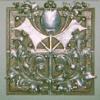Zaïde, A Matter Of Style
OK. So last week Netflix delivered to my doorstep the 2006 Salzburg production of this German-language opera by Mozart. It - the production – was so German, I mean, wow. Every single one of the male characters, except one, were in a constant and slow amble all over the stage wearing giant papier-mâché heads! Sometimes the heads came off so they could sing; sometimes, not. Here is a sample. Please note the out-of-scale elements (all unexplained within the drama…), and the title character's particular vocal style.
The work is listed as a fragment, although the entire opera exists except for a final chorus. Even the overture survives, as Alfred Einstein (the musicologist) pointed out in 1941. It was recycled a few years later as a stand-alone symphony; numbered as 32. This work always 'stood out,' as no other Mozart symphonies of this period take the short form of an overture.
Einstein thinks, and I agree, that the run of the stings are a perfect match for the characters in Zaïde, especially for Soliman, the bad guy. I mention this, as Einstein is universally accepted as the The Great Mozart scholar, and yet no recording or production of the opera that I am aware of presents it with its overture!
I have to give you information on the work, and little is known, but a lot is speculated. The work is based on a piece by Voltaire and is about the arbitrary, and thus impossibly cruel, nature of slavery. It was only found by the widow Mozart in 1799 amongst his old papers. Based on his letters, and the presence of a certain impresario in Salzburg in 1779-1780, it was assumed to date from that period. The letters come from the time just before, when Mozart was traveling to Paris. In Mannheim he encountered a fantastic musical scene and a lively avant-garde musical theater. It was experimental and included spoken dialogue with orchestral accompaniment. The impresario who stumbled into his hometown was a man who changed Mozart's life, and music in general, forever. His name was Emanuel Schikaneder, and he later created The Magic Flute with the composer.
Schikaneder loved the stage, and taught Mozart to love Shakespeare. Mozart dug out a couple of his 'old' stage pieces and re-worked them with the impresario. His flop Italian comic opera, La finta giardiniera (The Fake Gardengirl), became a huge success as The Gardengirl in Love (in German). So popular that it was constantly on stage for the next 35 years! But Schikaneder said he had written the whole thing, bastard!
So, because of those factors, scholars assumed that Zaïde was another piece for Schikaneder from around 1780.
I played along with that…But here's my revelation. Two things became clear as a bell.
The DVD's soprano, in the title role, was well up to the particular challenges. Mozart clearly wrote this role for an individual singer. She is required to leap about three octaves from one note to the next, which is hard, but Mozart consistently does it to highlight her psychological pain. As I watched this production, not really wanting to use my 'eyes' because the staging was so much a challenge, it hit me that actor was the same as the one who created the title role in La finta giardiniera – exactly the same range; exactly the same vocal acting-style.
Then the light bulb clicked. I had always been bothered by the style of Zaïde. Not that it's not beautiful, it is in spades! But it does not sound like Mozart in 1780. The composer had a huge shift soon after Giardiniera. His strings stopped being so slavish to copying the melody line and began to explore the ins and out all around the melody line, and more strikingly, the winds stopped being adjuncts to the strings and asserted themselves as equals. They did this to carry melody, to be dissonant against it, etc. This post 1775 style is what we think of as 'Mozart.' But Zaïde, is a major retrogression if it dates from when it is assumed to date.
So style-wise, and the fact that the title role was created for an actress he worked with only briefly in 1774, in Munich, must mean the opera dates from then. It's so obvious; it's so clear. And it's something that can be confirmed. Hand-made paper of the time is watermarked. If the paper of the manuscript was made in Munich in the mid 70's, the deal is sealed. If made in Salzburg in the late 70's then the speculation is right.
Here's the title role of Giardiniera singing Crudeli, fermate, crudeli.
And the title role from Zaïde singing Tiger! Wetze nur die Klauen.
Immediately you can tell the approach to the orchestra is the same, and I think the vocal acting shows the roles were created for the same actress. The more I watched it in this light, the more the melodies seemed matched as well.
Here's the style of the suddenly changed Mozart. This is his style only months after of Giardiniera: (from Il re pastore)
Everything is totally different! Mozart liberated.
And finally, just for chuckles, here is how Mozart was handling dramatic musical settings in 1780, the time Zaïde was supposedly abandoned to write this very work, Idomeneo:
So, what do you think?
-
 2
2




1 Comment
Recommended Comments
Create an account or sign in to comment
You need to be a member in order to leave a comment
Create an account
Sign up for a new account in our community. It's easy!
Register a new accountSign in
Already have an account? Sign in here.
Sign In Now